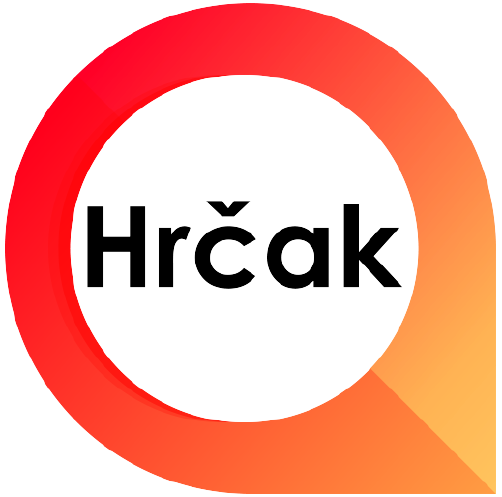
- Status in HRČAK: active
-
ISSN 0352-9568 (Tisak)
ISSN 1846-5153 (Online) -
UDK: 66
CODEN: CBEQEZ
- Contact:
CROATIAN SOCIETY OF CHEMICAL ENGINEERS
Berislaviceva 6
HR-10000 Zagreb
Phone: +385 1 4605 021
Fax: +385 1 4872 490 - Email: cabeq@fkit.hr
- URL: http://www.hdki.hr/cabeq
- Publisher:
Croatian Society of Chemical Engineers
Berislavićeva ul. 6/I, 10 001 ZAGREB
http://www.hdki.hr
hdki@hdki.hr
- Guidelines for authors
- Guidelines for reviewers
- Impressum
- Publication Ethics and Malpractice Statement
The initiative to start with publication of a new journal Chemical and Biochemical Engineering Quarterly (CABEQ) as a part of European Alpe-Adria initiative for regional co-operation between Austria, Croatia, Italy and Slovenia. Aim of the journal to advance communication between chemical and biochemical engineers and scientists from Central Europe and Mediterranean countries. The journal accepts contributions of original scientific papers, reviews, preliminary communications, professional papers, conference papers, opinion papers and notes. The first issue of CABEQ appeared in March 1987, and since that date it has been continuously published for 20 years, four issues per year. CABEQ is referred to in the following data bases: Current Contents, Web of Science, Science Direct, Scopus, SCI, Chemical Abstract, Chemical Engineering Abstracts, Chemical Engineering and Biotechnology Abstracts, Chemicher Informationsdienst, SCI-Biotechnology Abstracts, and russian Referativni Žurnal. Offprint of the articles are available through The Genuine Article® delivery program of the American Institute for Scientific Information (ISI). Co-Editors-in-Chief: Prof. Marko Rogošić, University of Zagreb, Croatia (for articles in field of chemical engineering) Prof. Bruno Zelić, University of Zagreb, Croatia (for articles in field of biochemical engineering) Assistant Editor: Assist. Prof. Tamara Jurina, University of Zagreb, Croatia Associate Editors: Prof. Mario Grassi, University of Trieste, Italy Dr. Martin Koller, University of Graz, Austria Prof. Igor Plazl, University of Ljubljana, Slovenia Editorial Board: Dr. Michela Abrami, University of Trieste, Italy Prof. Boštjan Genorio, University of Ljubljana, Slovenia Prof. Zdravko Kravanja, University of Maribor, Slovenia Prof. Marko Rogošić, University of Zagreb, Croatia Prof. Božidar Šantek, University of Zagreb, Croatia Prof. Marina Tišma, Josip Juraj Strossmayer University of Osijek, Croatia Prof. Bruno Zelić, University of Zagreb, Croatia Prof. Polona Žnidaršič Plazl, University of Ljubljana, Slovenia Scientific Advisory Board: Grozdana Bogdanić (Czech Republic), Peter Glavič (Slovenia), Zoran Gomzi (Croatia), Goran Jovanović (USA), Želimir Kurtanjek (Croatia), Romano Lapasin (Italy), Vladimir Mahalec (Canada), Michael Narodoslawsky (Austria), Milan Popović (Germany), Dinko Sinčić (Croatia), Đurđa Vasić-Rački (Croatia), Ivan Wichterle (Czech Republic), Roland Wohlgemuth (Switzerland), John Woodley (Denmark), Stanka Zrnčević (Croatia)
- Peer review: peer review, international peer review, only scientific papers, open peer review, triple or more
- First year of publication: 1987.
- Frequency (annually): 4
- Scientific disciplines and subdisciplines: Biotechnology, Chemical Engineering
- Date added to HRČAK: 07.02.2006.
- Rights:
Journal "Chemical and Biochemical Engineering Quarterly" is an Open Access journal at the highest possible level meaning that all content is immediately and freely available to anyone, anywhere, to be downloaded, printed, distributed, read, reused, self archived, and remixed (including commercially) without restriction, as long as the author and the original source are properly attributed according to the Creative Commons Attribution 4.0 International License (CC BY). The author(s) hold the copyright and retain publishing rights without restrictions.
CC BY (Creative Commons Attribution) is the most accommodating of public copyright licenses as defined by Creative Commons, a nonprofit organization that provides legal tools for sharing and use of creative works and research. The CC BY license is recommended for maximum dissemination and use of licensed materials. All content published in Kemija u industriji is available under CC BY, meaning anyone is free to use and reuse the content provided the original source and authors are credited. The copyright is held and retained. The author(s) hold the copyright without restrictions
CC BY is the appropriate license for publicly funded research; it maximizes the potential for both economic and scholarly impact, protects the rights of authors and strengthens the long-standing tradition of appropriate attribution and credit for scholarship.
Journal does not charge neither article processing charges (APCs) nor article submission charges.
Self-archiving policy Sherpa/ROMEO blue route since 2013.
All published manuscripts are licensed under a Creative Commons Attribution 4.0 International License. 
